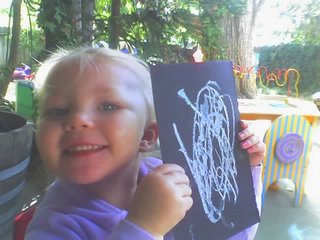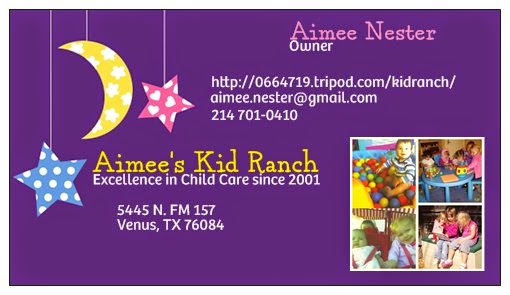The following are my tips on communicating with young children -- and you thought it couldn't be done. It can take some time, and lots of patience, but communicating respectfully with your child means they will communicate respectfully with others. After all, it's probably too late when they reach their teens. Oh, and I know someone will have a few opinions about that!
1.
3 keys to Effective Communication: a. Get down at the child's eye level when speaking to them. b. Always use a calm quiet voice (save your loud voice for emergencies only -- like "Robbie, get out of the street!!"

). c. Be sure you are in close proximity to the child when you are talking to them (about 1 foot away from the child per year; 3 year old, 3 feet away).
2.
Praise Versus Encouragement?
Praise: Strokes and compliments for a job well done.
The problem? Praise creates children who are not intrinsically motivated, but seek reward.
Encouragement: Little comments to motivate, and just enough help for children to achieve sucess.
The problem? None. Encouragement shows the child you are interested in what they are doing and that it matters. With observation, you can notice when a child needs a little assistance; pouring juice, putting a lid on a marker, etc.
3.
Understanding Cooperation Versus Obedience:
Cooperation enlists willful participation. Children want to be a part of the activity.
Obedience is manditory; the adult makes the child engage in the activity.
It helps if you offer the child 2 choices which have the same end result; "We're leaving. Would you like to walk or have me carry you to the car"?
4.
3 Qualities of Good Rules: a. They excite exactly the behavior you desire: "Inside voices while in the house." b. They can be relayed by 2 people; child to adult, child to child, adult to adult. Keep it sweet and simple: The refrigerator is not available right now. A child can in turn, communicate this to another friend or to another adult. c. Lastly, Everyone follows them. Consistancy is important. It's shows that there really are limits for everyone not just for some.
To sum this up; be close to your child, be observant when they need a little extra help and encoouragement. We want independent children who cooperate; and also achieve because they have a desire to not because of reward.
Good rules are simply stated as what you desire the child to do (not what you do not want them to do), are easily communicated and followed by all.





















